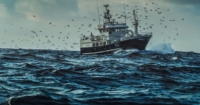Sri Lanka is home to some of the finest salt and freshwater fishing in the world. The island nation formerly known as Ceylon is home to game fish like tuna, wahoo, grouper, sailfish and marlin as well as reef fish like snapper, barracuda and the ever-enticing GT.
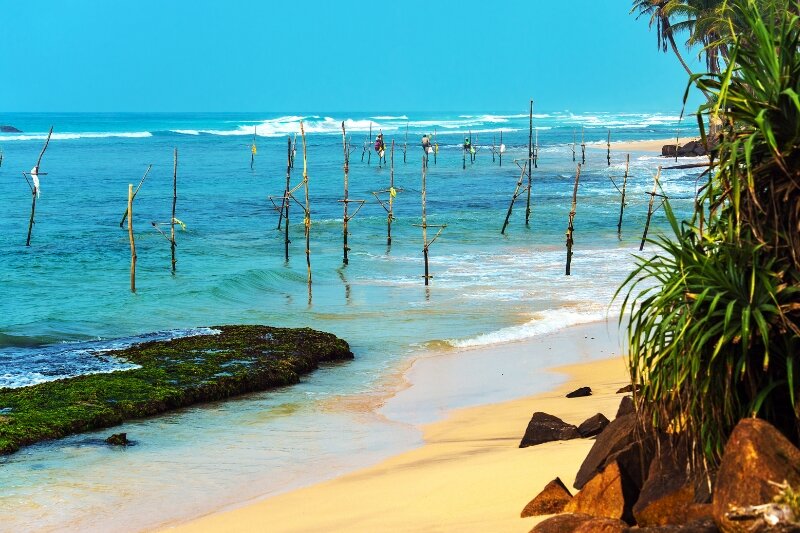
But Sri Lanka isn’t just a mecca for saltwater anglers. The fresh backwaters and mangroves are home to the exceptional wild golden barramundi, tilapia, jack, catfish and snakehead to name but a few. Chartering a vessel is very good value as fishing goes and four-hour trips on private boats can cost as little as $150.
So whether you’re looking to target tuna or wahoo from the southern and west coastlines in the heat of summer or fancy some freshwater fishing from one of Sri Lanka’s prized lakes – Bolgoda, Tissa and Habarana – then this island nation is a great shout.
What’s on this page?
Can I fish in Sri Lanka?
Yes, you can fish in Sri Lanka. The waters around the island are some of the richest in the world, with people coming from all over the world to fish for tuna, grouper, snapper, barracuda and jack fish to name a few. Overfishing and a lack of infrastructure continue to cause problems with regard to fish populations and sustainability, but that doesn’t detract from how stunning the fishing can be.
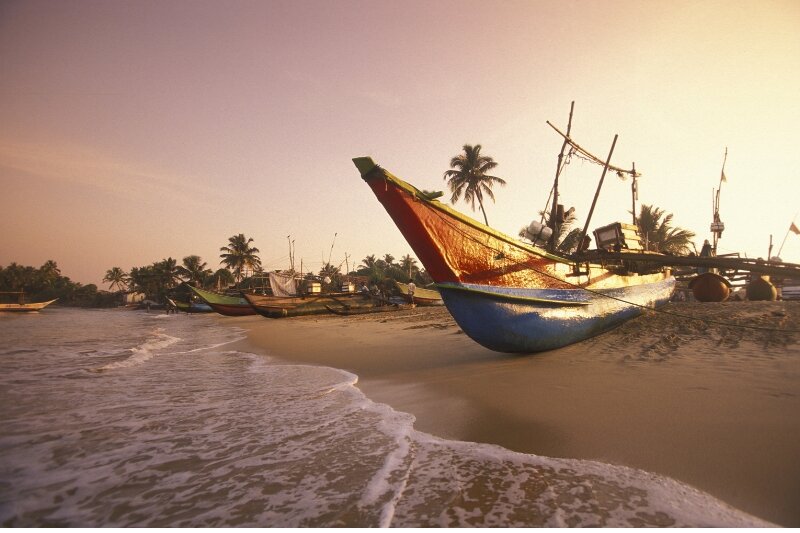
The island state’s coastline runs for 1,340km (832.6 miles) with incredibly rich waters that are ripe for fishing. It should come as no surprise that fish make up around 50% of Sri Lankans’ protein intake and the fisheries sector supports close to 1 million fishermen, workers and their families.
When is the fishing season in Sri Lanka?
There is no specific fishing season to be aware of in Sri Lanka, with saltwater and inland fishing accessible all year-around. The inland lakes (or backwaters as they’re known), mangroves and estuaries are home to some fantastic barramundi and jack that you can fish from manoeuvrable bass boats. Whereas deep-sea and reef fishing tends to be done from similar size trolling boats.
If you’re fishing from the south and west coast, then November to April tends to provide calmer, clearer waters. If you’re exploring the east coast of Sri Lanka, then May – September tends to provide better conditions.
The fishing season really depends on whether you’re fishing inland or on the sea. Inland fishing can be accessed year-round thanks to the calmness of the water, whereas deep sea fishing depends on the time of year and area you’re fishing in.
What fish can you catch in Sri Lanka?
If you’re fishing in the sea, you can catch a wealth of species, from giant trevally to blue marlin and everything in between. Below you’ll find the most sought-after saltwater and freshwater species in Sri Lanka:
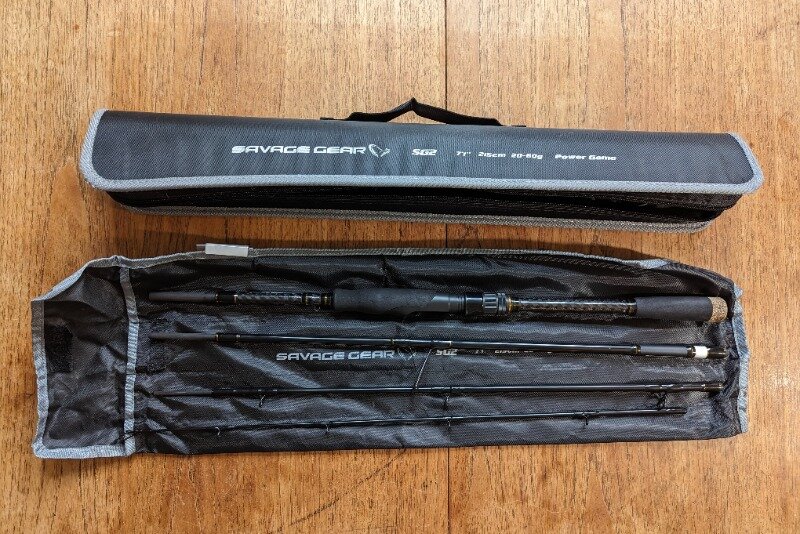
Saltwater fish
- Yellowfin, bluefin, bullet, skipjack, bigeye and mackerel tuna
- Grouper
- Barracuda
- Red and white snapper
- Jackfish
- Wahoo
- Maco, silky, hammerhead
- Sting ray
- Giant trevally
- Blue, black and striped marlin
Freshwater fish
- Eels
- Carp
- Barb
- Rasbora
- Loach
- Catfish
- Cichlids
- Snakeheads
- Barramundi
- Jacks
- Garfish
- Goby
This Wikipedia page on commercial fish species in Sri Lanka is an excellent resource that includes all the saltwater species you can expect to find. If you’re fishing inland in backwaters and mangroves, then this resource on the freshwater fish you can expect to find in Sri Lanka is equally excellent.
The 7 Best Travel Fishing Rods in 2023
Saltwater fishing in Sri Lanka
Sri Lanka offers some of the best saltwater sport fishing around. The island is rich in some of the best fighting fish on the planet – grouper, GTs, marlin, tuna, and wahoo. The list goes on. The west coast is particularly sought after when it comes to sport and deep-sea fishing, with popping, trolling and jigging all on the menu.
If you’re after some serious sport fishing, then you’ll need to go through a proper chartered vessel. However, if you’re looking for smaller tuna or some lighter reef fishing, most of the local dive schools and whale-watching companies will provide a reasonable fishing service.
Sri Lanka is completely surrounded by a continental shelf which is perfect for targeting reef fish on some lighter tackle. Jigging and popping for snapper, GT and other reef fish around the sunken forests, rocky outcrops and underwater structure is fantastic fun.
Where are the best places to fish in Sri Lanka?
Sri Lanka’s west and southern coast has some particularly stunning fishing between November – April whereas the east coast tends to be better between May-September. Oceanographic conditions around Sri Lanka are driven by the bimodal pattern of monsoonal winds, which give rise to seasonal periods of fishing boon and bust. Well, relative bust.
If you’re fishing inland for jackfish or barramundi, then these waters can be fished throughout the year and are prevalent across the entire country.
Fishing in Galle
As one of Sri Lanka’s most popular ports, Galle is famous (or infamous) for its fishing. Trolling for tuna and other sport fish a few miles offshore is a way of life for a huge number of Sri Lankans’ and – for the sport fishing fanatics out there – is a fantastic place to target some sizeable saltwater predators.
if you pay a quick visit to Galle’s fish market in the morning, you’ll probably see some seriously large tuna. Unfortunately what you’ll also notice are the poor conditions the fish are stored in, particularly in the heat of the midday sun.
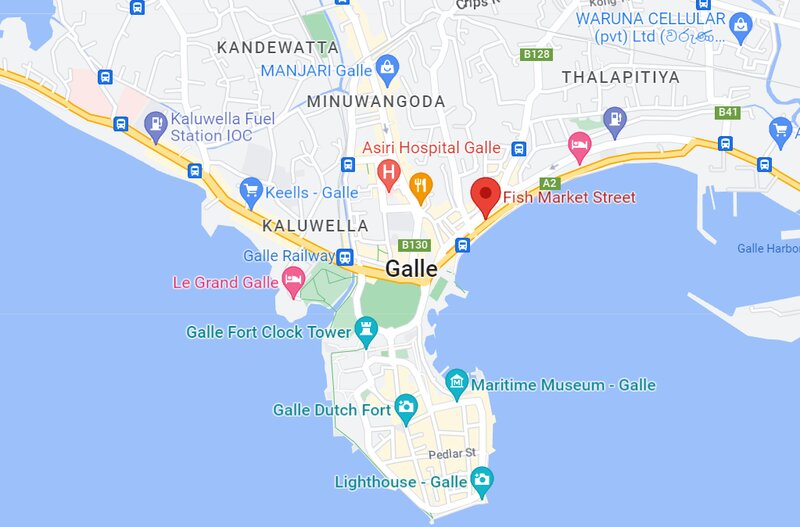
Fishing from the shore is also more than possible in Galle. The tide is much more prevalent in Galle than in other areas of the west coast like Mirissa, and fishing the waters around the fort town from the rocks is popular with local residents. I’ll admit I was the only tourist partaking in a little LRF (and was completely outfished by guys with a stick and a hook), but catching big fish from the shore is more than doable.
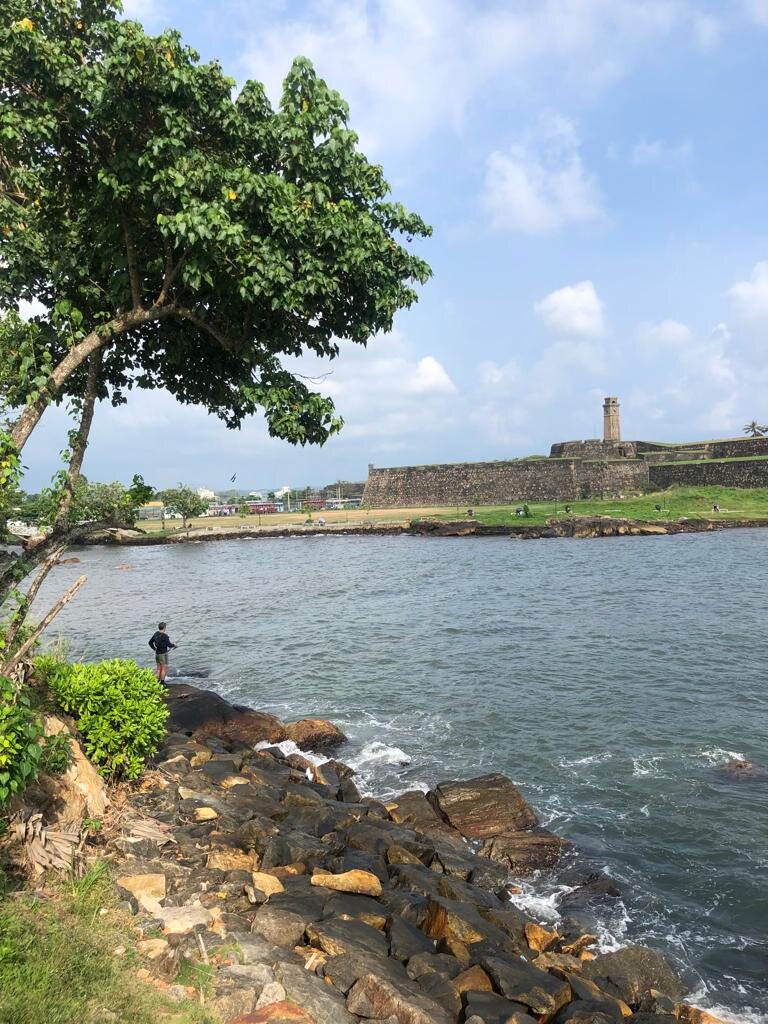
Fishing in Mirissa
Mirissa is famed for its deep-sea fishing, with tuna, GT, Spanish mackerel, wahoo et al all on the menu. The best time of day for deep sea fishing experiences tends to be early morning and tends to run from around 6 – 10 on the smaller vessels. If you’re chartering a larger vessel, determined to catch a GT or sailfish, then you can charter half or full-day experiences.
Reef fishing is also ubiquitous around the area, with the majority of snorkelling, diving or whale-watching companies having a more family-friendly reef fishing option. Snapper, reef fish, grouper, garfish and barracuda are pretty common and great fun.
Mirissa is home to one of the largest populations of blue whales and sits on their migration path. The island’s geology (a narrow continental shelf surrounding it) and climate mean pods of pygmy blue whales can swim close to the shore. And upwelling (an underwater process where cold, nutrient-rich water is forced towards the surface) brings with it enormous amounts of krill.
Typically the fishing season (November – April) marries up with the best time to see blue whales in the wild.
Freshwater fishing in Sri Lanka
Freshwater fishing in Sri Lanka is seriously exciting. It’s not something I was able to partake in whilst I was there, but I will be back. The wild golden barramundi is arguably the prize freshwater fish out there, but the mangrove jacks, tilapia, snakeheads and catfish offer some equally exciting fishing. Lakes like Bolgoda, Tissa and Habarana are fantastic places to start, but the backwaters and mangroves are present throughout the entire country.
In Mirissa we stayed at a hotel called D Canal House, which – as you’d expect – is situated on a canal. The canal was absolutely teeming with life, particularly around dawn and dusk, with some seriously large catfish and – amazingly – freshwater rays pretty commonplace.
What are the main problems with the fishing industry in Sri Lanka?
Overfishing
There are over 50,000 Sri Lankan fishing vessels that support over a million Sri Lankans’ every day. And whilst the majority of these vessels are small, individual ships, at least 10% of the industry is made up of multi-day trawlers and commercial vessels. With so many people so heavily reliant on the ocean for subsistence living – the sector contributes about 2.7% of total GDP, 27 times that of the UK – it’s no surprise that overfishing is a key issue.
The lack of enforced regulations or prohibition of harmful fishing methods – gil nets, push nets, trammel nets et al – plays a key role in cultivating an environment where overfishing is a serious issue.
A 2023 Guide to the UK fishing industry
Spoilage
With temperatures reaching early to mid-thirties in the peak of the fishing season, it’s no surprise that fish need to be kept cool when caught. From personal experience, this isn’t the case. The smaller fishing vessels (that make up the majority of the industry) simply aren’t equipped for this and the fish are tossed into the hold for hours. Weeks even on the ‘multiday’ vessels, which have equally poor or non-existent fish preservation systems, making the catch unsuitable for export.
This is such a problem that it’s estimated about 50% of the tuna catch is spoiled before it reaches the shore. This significantly diminishes export revenues and modernisation and investment are crucial.
Infrastructure
Refrigeration and safe storage are not the only issues when it comes to the infrastructure of the Sri Lankan fishing industry. A lack of safe, sanitary facilities on and off boats means accidents, spoiled catch and stock and fishery management are all of real concern.
With no registration of craft or fishermen to control capacity and effort, limited licensing, no cold storage facilities or proper education and training, there’s a long way to go before Sri Lanka’s fishing industry infrastructure is up to scratch.
After the 2004 Boxing Day tsunami, there was a sharp increase in the number of registered fishing vessels. This can be attributed to vessel donations by governmental and non-governmental organisations under the restoration of fisheries program.
Sustainability
There are minimal restrictions on the total catch of any specific species and fish like the yellowfin tuna have been seriously overfished. The survival and recovery of these fish are critical to Sri Lanka’s fishing industry. Yet without clear regulatory parameters and following the advice set out by the Indian Ocean Tuna Commission yellowfin tuna rebuilding plan, the stock could completely collapse by 2028.
The yellowfin tuna is listed as ‘near threatened’ on the IUCN Red List.
There is some good news here as the Sri Lankan government has invested in a new Vessel Monitoring System (VMS) for the deep sea fleet and has implemented the fishery improvement project (FIP) for tuna, billfish and blue swimmer crab.
FAQs
How much does fishing cost in Sri Lanka?
For an average four-hour boat trip you can expect to pay somewhere between $150-200. However, if you plan on going after some larger game fish like sailfish or marlin this price could be trebled. Inland fishing on backwaters and mangroves is likely to set you back around $400 for an eight-hour trip.
How many species of fish are there in Sri Lanka?
According to Fish Base, there are 982 species of fish definitely present in Sri Lanka, 37 species possibly present and 7 species that are demonstrably absent. i.e. species that were once present and are now gone.
How many freshwater fish are there in Sri Lanka?
Sri Lanka has 179 species of freshwater fish currently present on the island. There are three species of fish possibly present and eight species that are no longer present in Sri Lanka.
What deep sea fish are there in Sri Lanka?
Sri Lanka is home to some excellent deep-sea fishing, with multiple types of tuna, wahoo, marlin, sharks and grouper all on the menu. Barracuda, snapper and GT can be found closer to shore too around the continental shelf that surrounds the island.
Harry
Hi, I'm Harry. A keen, albeit exceedingly average fisherman. I've spent the last few years trawling London's waterways with - if I'm being kind - varied success and would love to help you avoid the mistakes I have made.


